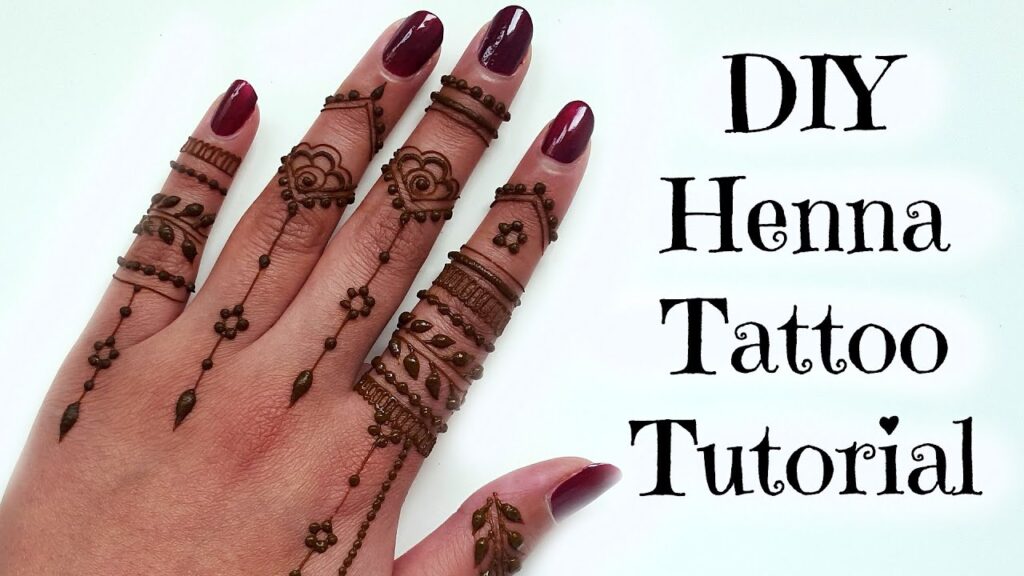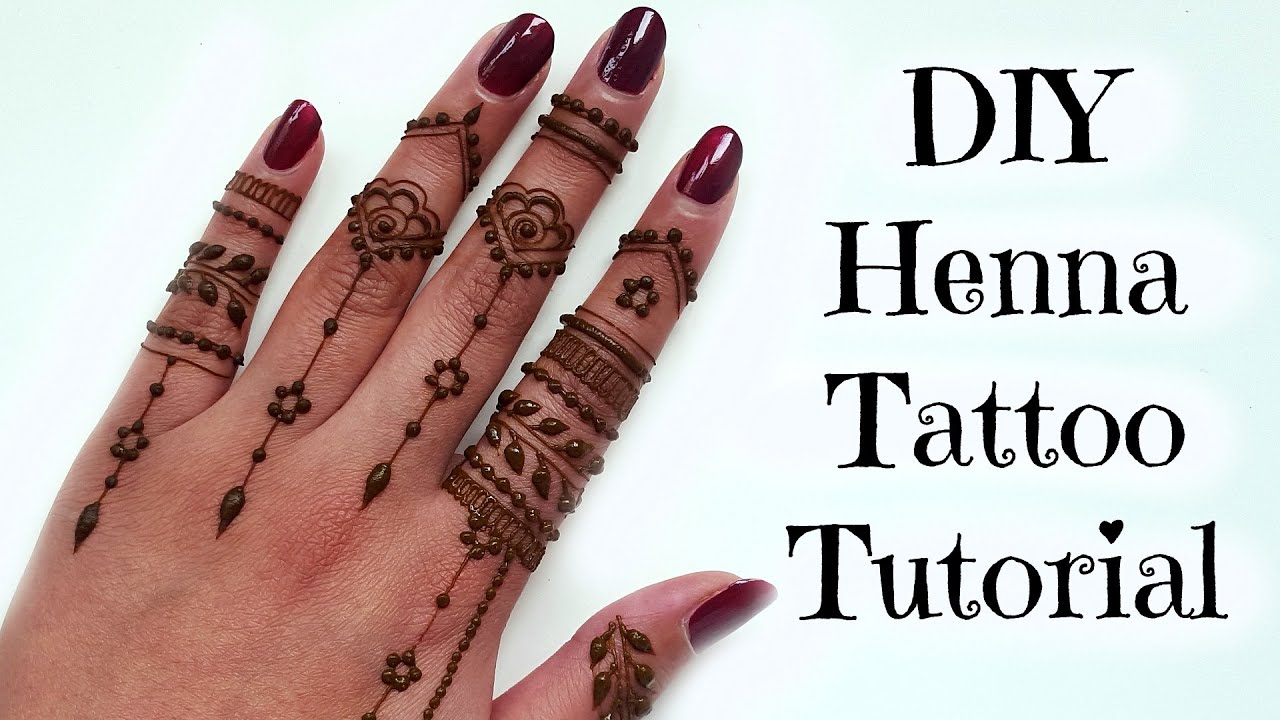
Effortless Elegance: Henna Tattoo Designs for Beginners
Henna tattoos, also known as mehndi, have captivated cultures for centuries with their intricate beauty and symbolic significance. For beginners eager to explore this art form, the prospect of creating stunning designs might seem daunting. However, with the right guidance and a focus on simpler patterns, anyone can master the basics and create beautiful henna tattoo designs for beginners. This article will delve into the essential techniques, design ideas, and practical tips to help you embark on your henna journey with confidence.
Understanding Henna and Its Application
Before diving into designs, it’s crucial to understand the nature of henna. Henna is a natural dye derived from the henna plant (Lawsonia inermis). The leaves are dried, crushed into a fine powder, and then mixed with liquids like water, lemon juice, or tea to create a paste. This paste is then applied to the skin, staining it a reddish-brown color that typically lasts for one to three weeks. For henna tattoo designs for beginners, it’s important to use high-quality, natural henna powder to avoid allergic reactions or skin irritations from chemical additives.
Choosing the Right Henna Paste
Pre-made henna cones are readily available, making the application process more convenient. However, it’s essential to verify the ingredients. Look for cones labeled as “natural henna” or “pure henna.” Avoid cones that contain black dye (often called “black henna”), as this contains a chemical dye (PPD) that can cause severe skin reactions. If you prefer making your own henna paste, numerous recipes are available online, allowing you to control the ingredients and consistency. This is often the preferred method for serious henna artists who want the best quality and control over their art.
Essential Tools and Preparation
Besides henna paste, you’ll need a few essential tools:
- Applicator Bottles or Cones: These allow for precise application of the henna paste.
- Toothpicks or Cotton Swabs: Useful for correcting mistakes and cleaning up edges.
- Lemon Juice and Sugar Mixture: Applying this mixture to the dried henna helps keep it moist, allowing for a darker and longer-lasting stain.
- Eucalyptus Oil: Applying a small amount of eucalyptus oil to the skin before applying henna can enhance the stain.
Before applying henna, ensure the skin is clean and free of oils or lotions. Exfoliating the area beforehand can also improve the stain’s intensity. Practice on paper or a non-visible area of your body before attempting a full design. This allows you to get a feel for the henna cone and practice your linework.
Simple Henna Tattoo Design Ideas for Beginners
When starting out, it’s best to focus on simple, repetitive patterns. These are easier to execute and allow you to develop your technique gradually. Here are a few henna tattoo designs for beginners to get you started:
Basic Lines and Dots
Mastering straight lines and dots is fundamental to henna art. Practice drawing consistent lines of varying thicknesses and evenly spaced dots. These simple elements can be combined to create various patterns, such as:
- Simple Bands: Draw a series of parallel lines around the wrist, ankle, or fingers. Add dots between the lines for a more decorative effect.
- Dot Mandalas: Start with a central dot and create concentric circles of dots around it.
- Geometric Patterns: Combine lines and dots to create simple geometric shapes like triangles, squares, and diamonds.
Floral Motifs
Flowers are a popular choice for henna designs. Start with simple flower shapes like daisies or roses. Break down the design into basic steps:
- Central Circle: Draw a small circle as the center of the flower.
- Petals: Add petals around the circle, keeping them symmetrical and evenly spaced.
- Leaves: Draw simple leaf shapes around the flower.
As you become more comfortable, you can experiment with different petal shapes and add details like veins and shading. Explore simple vine patterns with leaves. These can be drawn along the arm, leg, or back. Begin with a wavy line and add small leaves along the vine. Vary the size and shape of the leaves for a more natural look. Simple floral patterns are great henna tattoo designs for beginners.
Geometric Patterns
Geometric patterns offer a modern and stylish alternative to traditional floral designs. These patterns are often easier to create for beginners, as they rely on straight lines and simple shapes. Consider these ideas:
- Tribal-Inspired Designs: Incorporate bold lines, triangles, and other geometric shapes to create tribal-inspired patterns.
- Chevron Patterns: Draw a series of V-shaped lines to create a chevron pattern. This can be used as a border or as the main element of the design.
- Diamond Patterns: Create a grid of diamonds and fill them in with henna.
Simple Paisley Patterns
Paisley is a classic henna motif that can be adapted for beginners. Start with a basic teardrop shape and add simple swirls and curves inside. You can also add dots or small leaves to embellish the design. Paisley patterns are versatile and can be incorporated into various designs, such as borders, fillers, or standalone motifs.
Tips for Successful Henna Application
Here are some practical tips to ensure a successful henna application and a beautiful stain:
- Practice Makes Perfect: Don’t be discouraged if your first few attempts aren’t perfect. The more you practice, the better you’ll become.
- Steady Hand: Maintain a steady hand while applying the henna. Rest your elbow on a table or other surface for added stability.
- Consistent Pressure: Apply consistent pressure to the henna cone to ensure a smooth and even flow of paste.
- Avoid Overlapping Lines: Overlapping lines can result in a muddy stain. Try to keep your lines clean and distinct.
- Correct Mistakes Immediately: If you make a mistake, use a toothpick or cotton swab to remove the henna paste immediately.
Aftercare for a Darker Stain
Proper aftercare is essential for achieving a dark and long-lasting henna stain. Follow these steps:
- Keep the Henna Paste on for as Long as Possible: Aim for at least 2-6 hours, or even overnight. The longer the paste stays on, the darker the stain will be.
- Avoid Water: Avoid washing the area with water for the first few hours after removing the henna paste. Water can interfere with the oxidation process, resulting in a lighter stain.
- Apply Lemon Juice and Sugar Mixture: As mentioned earlier, applying a mixture of lemon juice and sugar to the dried henna helps keep it moist and enhances the stain.
- Keep Warm: Keeping the area warm can also help darken the stain. You can wrap the area with a bandage or wear warm clothing.
- Avoid Harsh Soaps and Exfoliants: Harsh soaps and exfoliants can fade the henna stain. Use mild, gentle cleansers and avoid scrubbing the area.
- Moisturize Regularly: Keeping the skin moisturized can help prolong the life of the henna stain. Apply a natural oil like coconut oil or olive oil to the area regularly.
By following these tips, even beginner henna artists can achieve impressive results and create stunning henna tattoo designs for beginners.
Beyond the Basics: Expanding Your Henna Skills
Once you’ve mastered the basic techniques and designs, you can start exploring more advanced concepts. Consider these options:
Learning from Tutorials and Workshops
Numerous online tutorials and workshops can provide valuable insights and guidance. These resources can help you learn new techniques, discover new design ideas, and improve your overall henna skills. Seek out reputable instructors and tutorials that focus on natural henna and safe application practices.
Experimenting with Different Styles
Henna art encompasses a wide range of styles, from traditional Indian and Arabic designs to modern and contemporary patterns. Experiment with different styles to find what resonates with you. Research the history and cultural significance of each style to gain a deeper appreciation for the art form.
Developing Your Own Unique Designs
The ultimate goal is to develop your own unique style and create original henna designs. Draw inspiration from nature, art, and your own imagination. Don’t be afraid to experiment and push the boundaries of traditional henna art. Consider incorporating personal symbols, meaningful motifs, or abstract patterns into your designs.
The Enduring Appeal of Henna Tattoos
Henna tattoos offer a beautiful and temporary way to express yourself. Whether you’re a beginner just starting out or an experienced artist looking to refine your skills, the world of henna art is full of possibilities. With patience, practice, and a willingness to learn, you can create stunning and meaningful henna tattoo designs for beginners that will be cherished for years to come. The rich history and cultural significance of henna add another layer of depth to this art form, making it a truly special and rewarding pursuit. So, grab your henna cone and embark on your creative journey today! [See also: How to Make Henna Paste at Home]

